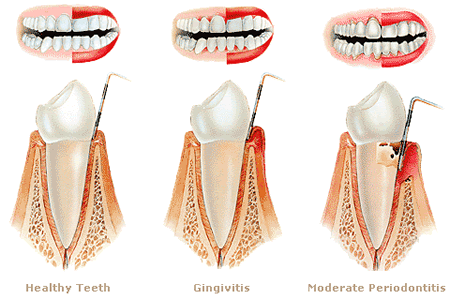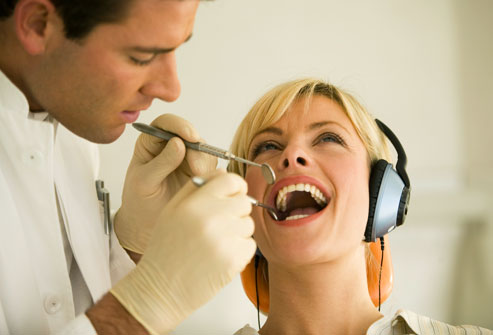Bleeding in the gums is a condition in which blood leaks from the gums and the spaces between the teeth. It’s estimated to affect more than half of all adults in the UK to some degree and most people experience it at least once. It is much less common in children.
If you have gum disease, your gums may bleed when you brush your teeth and you may have bad breath. This stage of gum disease is known as gingivitis.
If gingivitis is not treated, a condition called periodontitis can develop. This affects the tissues that support teeth and hold them in place. In the UK, up to 15% of adults are estimated to have severe periodontitis, with many more affected less severely
What causes bleeding gums?
There are many possible causes for bleeding gums, one of the primary reasons being gum disease. Persistent bleeding of the gums cannot be taken lightly. Greater intensity and
frequency of oral bleeding is usually a result of the underlying condition that leads to bleeding gums in the first place. There are many sources for these dental health concerns. Primary causes include gingivitis and periodontitis. These conditions can result in plaque formation in the teeth, infections and oral inflammation, which are all causes for bleeding in the gums.
What is gingivitis?

Gingivitis (“inflammation of the gum tissue”) is a non-destructive periodontal disease. The most common form of gingivitis, and the most common form of periodontal disease overall, is in response to plaque adherent to tooth surfaces. Gingivitis is reversible with good oral hygiene. However, in the absence of treatment, or if not controlled, gingivitis can progress to periodontitis, where the inflammation results in tissue destruction and alveolar bone resorption, which can ultimately lead to tooth loss.
Risk factors associated with gingivitis are:
- poor oral hygiene levels
- smoking
- psychosocial stress and genetic factors
- pre-existing conditions
What is Periodontitis
Periodontitis is a set of inflammatory diseases affecting the periodontium, i.e., the tissues that surround and support the teeth. Periodontitis involves progressive loss of the bone around the teeth, and if left untreated, can lead to the loosening and subsequent loss of teeth. Periodontitis is caused by microorganisms that adhere to and grow on the tooth’s surfaces, along with an over-aggressive immune response against these microorganisms. A diagnosis of periodontitis is established by inspecting the soft gum tissues around the teeth with a probe and by evaluating the patient’s X-ray films to determine the amount of bone loss around the teeth.
How can you treat bleeding gums?
Oral Hygiene – Good oral hygiene involves:
- brushing your teeth for two to three minutes twice a day (in the morning and at night), preferably with an electric toothbrush
- using toothpaste that contains fluoride (fluoride is a natural mineral that helps protect against tooth decay)
- flossing your teeth regularly (preferably daily)
- not smoking
- regularly visiting your dentist (at least once every one to two years, but more frequently if necessary)
See the teeth cleaning guide for more information and advice about good oral hygiene.
Dental treatments

– Regular dental check-ups- It is important to have regular check ups with your dentist. As part of a routine check of your mouth, the dentist will also want to have a look at the foundations of your teeth, or in technical speak ‘your gums’! You may notice from time to time when you are brushing your teeth that there is a little bit of blood when you spit out. This bleeding may indicate the presence of gingivitis or gum disease. The dentist has a small probe with a special tiny ball on the end of it, imaginatively called ‘the ball-ended probe’. This is used to gently run around the necks of your teeth where they meet the gums. The first signs of gum disease always start here and your dentist will not want to press hard at all on the gums. By doing this check, the dentist can identify any areas where gum disease is present. Oftentimes just telling you where you may have been missing the gum during brushing will solve this problem.
– On some areas of your mouth you may have a build-up of calcium deposits on the teeth. This is called calculus or tartar. If left in place the gum can become inflamed under the calculus area, so the dentist will make a note of this and may wish to provide some cleaning for you as part of your dental treatment.
– A visual check of the gums will usually tell the dentist if there is gingivitis or gum disease. Your dentist will usually refer you to see a dental hygienist who will thoroughly clean your teeth and give you useful oral hygiene instructions
Hygienist clean
A Hygienist cleaning is a thorough cleaning of your teeth and gums including oral hygiene/ brushing/flossing instructions and tips. Records of gum measurements are noted down so we can see if there has been improvement in cleaning and oral hygiene between appointments. This is carried out by a qualified hygienist who is qualified in providing excell Hygienist appointments play a very important role, Not only for preventing gum disease but to stabilise existing gum disease from progressing further. Hygienist appointments if kept regular and oral hygiene is maintained at home also, can in the long run save your teeth.
Home Care
You can also do your best at home to prevent bleeding gums, this includes
- brushing at least 2x a day with an electric toothbrush
- using floss, glide picks or TePes to clean interdentally
- using a mouthwash
- no fizzy drinks or added sugar
If you suffer with gum disease, unfortunately there is no cure for this, but the key is prevention and maintenance.
At Perfect Smile Spa, we have treated thousands of gum problems. We work closely with our hygenists and periodontist, and promise painless treatment.
Call us for a free consultation on 01708 442 114 or email care@perfectsmilespa.co.ukWhat Should You Do If Your Gums Bleed? was last modified: June 29th, 2018 by Dr Jas Sagoo



 132a High Street
132a High Street 01708442114
01708442114  care@perfectsmilespa.co.uk
care@perfectsmilespa.co.uk


